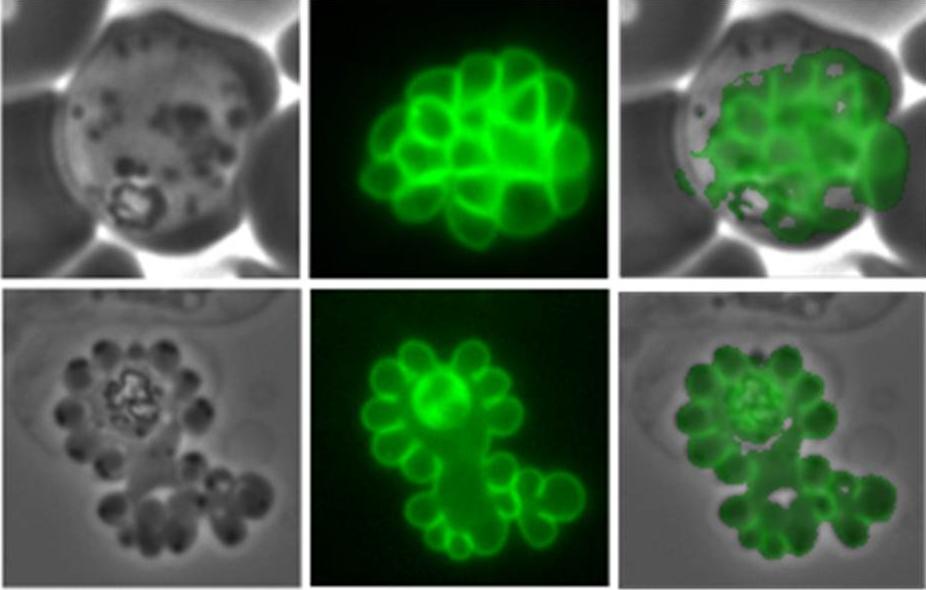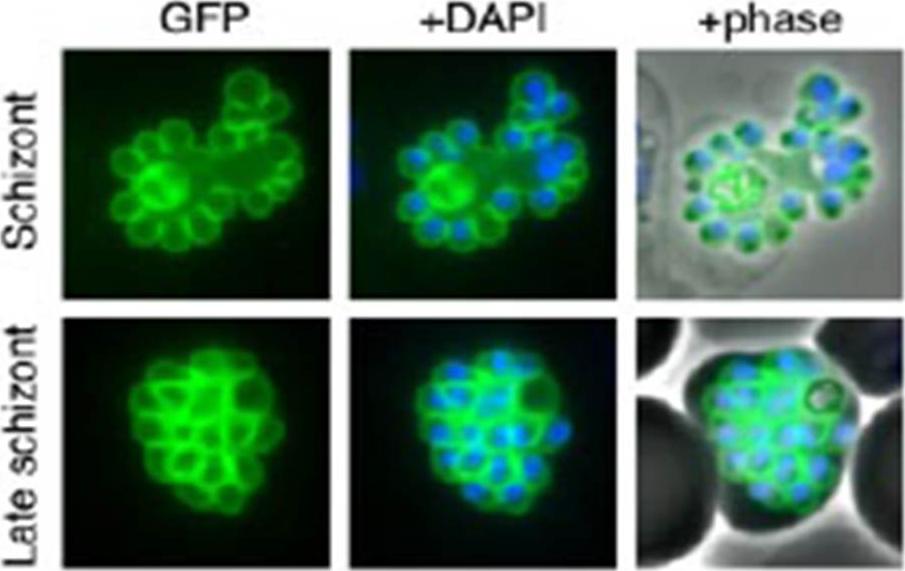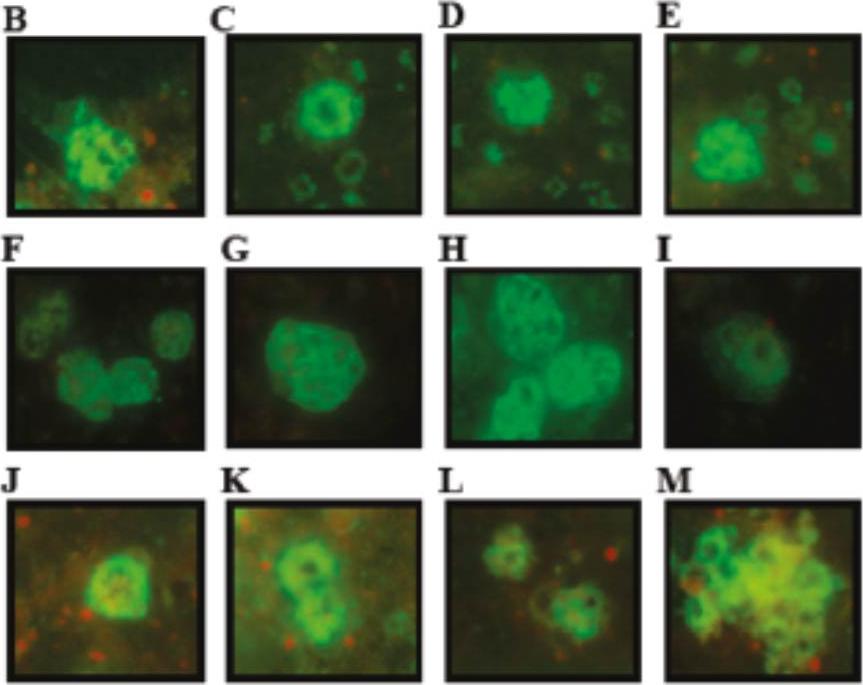PKNH_1107200 6-cysteine protein (P92)
Disruptability [+]
| Species | Disruptability | Reference | Submitter | |
|---|---|---|---|---|
| P. falciparum 3D7 |
Possible |
22986493 | Theo Sanderson, Wellcome Trust Sanger Institute | |
| P. falciparum 3D7 |
Possible |
USF piggyBac screen (Insert. mut.) | USF PiggyBac Screen | |
Mutant phenotypes [+]
| Species | Stage | Phenotype | Reference | Submitter |
|---|---|---|---|---|
| P. falciparum 3D7 | Asexual | 22986493 | Theo Sanderson, Wellcome Trust Sanger Institute | |
Imaging data (from Malaria Metabolic Pathways)

Confocal fluorescence microscopy images of schizont stage transfected 3D7 P. falciparum-infected RBCs expressing a GFP chimera directed to the parasite plasma membrane. DIC image, the GFP fluorescence signal and an overlay of a P. falciparum 92 cysteine-rich surface protein-GFP transfectant. Scale bar = 5 µm. Pf92 localizes to the merozoite surface and is a putative GPI-anchored protein distributed evenly over the parasite surface. Reprinted from with permission from Elsevier: Tilley L, McFadden G, Cowman A, Klonis N. Illuminating Plasmodium falciparum-infected red blood cells. Trends Parasitol. 2007 23:268-77.
See original on MMP
Localization of Pf92 fused to a GFP reporter and expressed in an inducible system that allows strong surface expression. Pf92-GFP was mostly concentrated essentially on the surface of merozoite. Sanders PR, Gilson PR, Cantin GT, Greenbaum DC, Nebl T, Carucci DJ, McConville MJ, Schofield L, Hodder AN, Yates JR 3rd, Crabb BS. Distinct protein classes including novel merozoite surface antigens in Raft-like membranes of Plasmodium falciparum. J Biol Chem. 2005 280:40169-76.
See original on MMP
Fixed and blocked late schizonts and ring stages were incubated with rabbit anti-Pf92 immune sera (B-I) or with Pf113 immune rabbit sera (J-M). In late schizonts Pf92 localized in merozoite and in ring stages (C-E). Pf113 was only detected on the merozoite surface, and not in other subcellular compartments or in any other intraerythrocytic lifecycle stage.Obando-Martinez AZ, Curtidor H, Arévalo-Pinzón G, Vanegas M, Vizcaino C, Patarroyo MA, Patarroyo ME. Conserved high activity binding peptides are involved in adhesion of two detergent-resistant membrane-associated merozoite proteins to red blood cells during invasion. J Med Chem. 2010 53:3907-3918.
See original on MMPMore information
| PlasmoDB | PKNH_1107200 |
| GeneDB | PKNH_1107200 |
| Malaria Metabolic Pathways | Localisation images Pathways mapped to |
| Previous ID(s) | PK13_6550w, PKH_110660 |
| Orthologs | PF3D7_1364100 , PVP01_1107900 , PVX_115165 |
| Google Scholar | Search for all mentions of this gene |